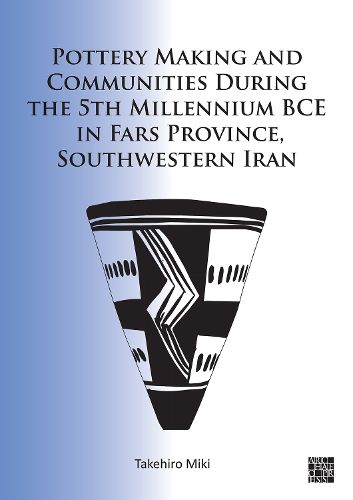Readings Newsletter
Become a Readings Member to make your shopping experience even easier.
Sign in or sign up for free!
You’re not far away from qualifying for FREE standard shipping within Australia
You’ve qualified for FREE standard shipping within Australia
The cart is loading…






This book explores pottery making and communities during the Bakun period (c. 5000 - 4000 BCE) in the Kur River Basin, Fars province, southwestern Iran, through the analysis of ceramic materials collected at Tall-e Jari A, Tall-e Gap, and Tall-e Bakun A & B. Firstly, it reconsiders the stratigraphy and radiocarbon dates of the four sites by reviewing the descriptions of excavation trenches, then presents a new chronological relationship between the sites. The book sets out diachronic changes in the the Bakun pottery quantitatively, namely the increase of black-on-buff ware and the gradual shift of vessel forms. It also presents analyses of pottery-making techniques, painting skills, petrography, and geochemistry and clarifies minor changes in the chai nes ope ratoires and major changes in painting skill. Finally, the book discusses the organisation of pottery production from a relational perspective. It concludes that the more fixed community of pottery making imposed longer apprenticeship periods and that social inequality also increased.
$9.00 standard shipping within Australia
FREE standard shipping within Australia for orders over $100.00
Express & International shipping calculated at checkout
This book explores pottery making and communities during the Bakun period (c. 5000 - 4000 BCE) in the Kur River Basin, Fars province, southwestern Iran, through the analysis of ceramic materials collected at Tall-e Jari A, Tall-e Gap, and Tall-e Bakun A & B. Firstly, it reconsiders the stratigraphy and radiocarbon dates of the four sites by reviewing the descriptions of excavation trenches, then presents a new chronological relationship between the sites. The book sets out diachronic changes in the the Bakun pottery quantitatively, namely the increase of black-on-buff ware and the gradual shift of vessel forms. It also presents analyses of pottery-making techniques, painting skills, petrography, and geochemistry and clarifies minor changes in the chai nes ope ratoires and major changes in painting skill. Finally, the book discusses the organisation of pottery production from a relational perspective. It concludes that the more fixed community of pottery making imposed longer apprenticeship periods and that social inequality also increased.